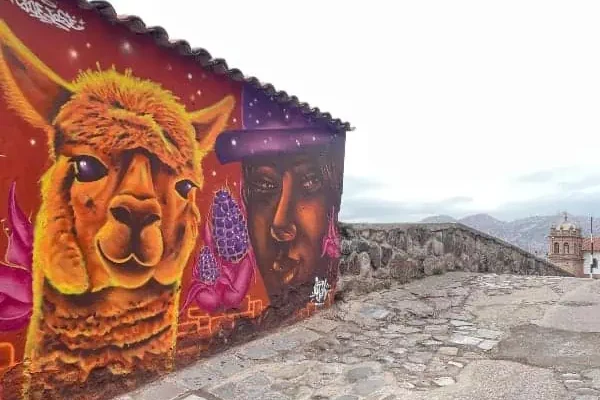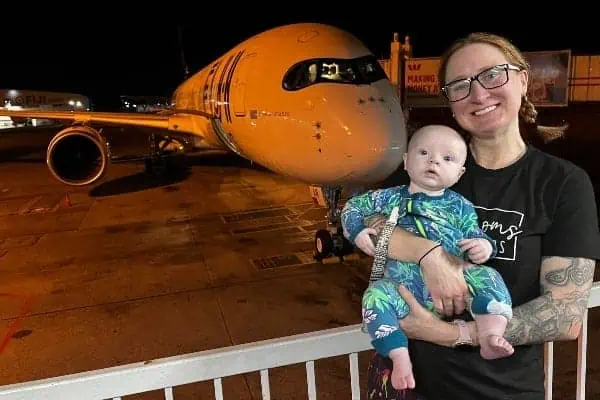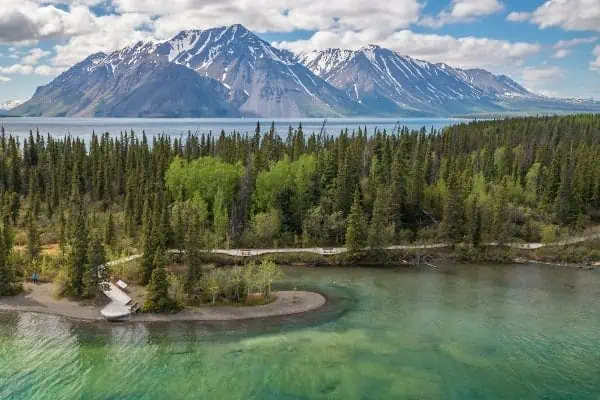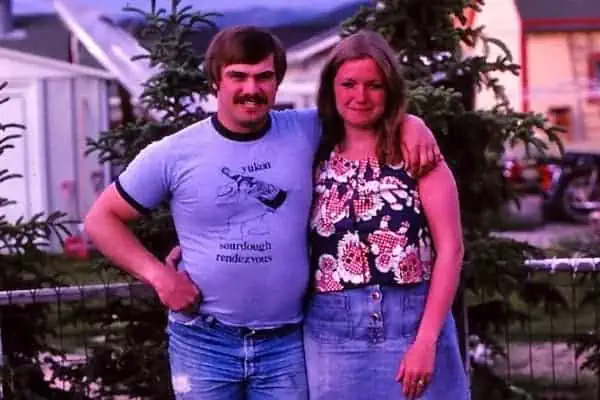You can learn a lot by studying animals, just ask local photographer Minnie Clarke. Her passion for capturing northern creatures was borne on a remote trapline in Johnson’s Crossing, Yukon.
Clarke has been photographing Yukon’s wilderness for 20 years, but one stunning subject in particular is the focal point of many of her studies: the trumpeter swan.
Through her longtime connection to the Johnson’s Crossing region, Clarke has come to intimately know these birds. She says that for over 10 years there has been a group of swans wintering close to the Teslin River Bridge, just down from Johnson’s Crossing Lodge. This year’s count reached 41 swans at Christmas time, and this number continues to grow.
The return of the swans marks the onset of spring here in the territory. Clarke says that the swans have been arriving from approximately March 3rd to March 10th for the last few years. She is fortunate enough to hear their long awaited arrival, as they fly directly over her property.
“I love swans. I think they’re my favourite bird,” says Clarke.
As a child, she remembers hearing the springtime influx of swans through the open window of her family’s cabin. The honking of swans could be heard all night long. As Johnson’s Crossing is part of the swan’s annual migratory route, gazing at these majestic birds was a major part of her childhood.
“They’re so beautiful,” Clarke says. “The pose I like best is when the swan lifts and shakes its wings. It reminds me of a big wedding dress with all its folds.”
The open waters of M’Clintock Bay, Tagish Lake, Teslin Lake, Kluane Lake and Lake Laberge provide stopovers for the swans on their long journey north to nesting grounds.
Clarke says that Johnson’s Crossing and Tagish Lake are some of the best places to view the swans, as you can get an up close glimpse without disturbing them. This year, as many as 700 swans were counted at Johnson’s Crossing in one day. Their stay depends on food and whether they’re disturbed or not.
“You have to be very mindful of the swans; they travel a long way and they’re very tired when they get to the river,” she says. She encourages birdwatchers to leave their dogs and young children at home, as they can run down to the ice and disturb the feeding swans.
Clarke captures photos of the swans using her long lens and even goes as far as setting up a bird hide (a camouflaged shelter used to view wildlife) on the river’s edge. She positions herself inside the shelter, often tucked underneath a bed sheet, with only her camera and tripod visible so that she can be as discreet as possible.
“Sometimes I sit in a snowbank for two hours,” Clarke says.
The result of her perseverance and patience? Incredibly intimate portraits of these long necked beauties – the best part being that no feathers are ruffled in the process.
“It’s very calming to be just sitting there and watching all this wildlife right in front of you.”
Clarke’s close connection with wildlife and the land has a longstanding history. Her father immigrated to the Yukon from England, and after meeting her mother in Johnson’s Crossing area, they started a trapline where they raised their family. Her parents trapped in the winter, and her dad worked for the forest service and ran a small guiding business in the summer.
“We had no electricity or running water, and we had to carry water from the Teslin River,” Clarke reminisces of her unique, rugged upbringing. “We had a lot of chores growing up, which was good because we learned to live on the land and be self sufficient. We were never bored.”
Clarke rode the big yellow bus to Teslin Monday to Friday to attend school. She remembers getting up to go to school in the dark and returning to their rustic cabin in the dark.
“One of my fondest memories is sitting around the kitchen table with an oil lamp doing our homework,” she says. She also remembers listening to classical music, her father’s favourite, on a battery operated record player. That is, until her cousin came to visit and left his rock and roll albums behind.
The trapline and cabin remains in Clarke’s family, and since 2010 Clarke and her husband have owned and operated Timberpoint Campground, a wilderness oasis with RV and tent sites, located beside Teslin Lake at Kilometre 1278 on the Alaska Highway.
Clarke worked for the Yukon Government in Teslin for 32 years, but now that she’s retired, she finds she can fully commit herself to her photographic craft.
“I bought a 35mm camera with my first paycheque from the Yukon Government,” she says. When she later bought a digital camera, Clarke went on YouTube and learned everything she could about camera settings and techniques.
Despite her many years of photography, she says she continues to practice, play and learn whenever she’s out with her camera – which is often.
Clarke says she loves all animals, and always stays curious and observant when she goes into the bush. “You have to be patient and wait,” she says. “You come to know what to expect and how the animal is going to behave just by observing and learning.”
She says photographing Yukon’s wild has taught her a lot. One phenomenon she has observed during her time on the land is that many animals don’t fear the presence of a camera, but they do fear humans’ eyes. By covering her eyes, Clarke finds she is able to capture more intimate experiences with wildlife.
“When you see an animal, if he sees your eyes, he’s afraid, but if you hold your camera up over your eyes and he can’t see them, you can almost walk right up to them.”
When Clarke isn’t focused on wildlife, she can be found managing her campground business, or doing wedding photography. Her art is available at the Nisutlin Trading Post in Teslin and at Johnson’s Crossing Lodge. Her photography is also featured from time to time in the Whitehorse Star. She sells her photography online at FineArtAmerica.com and Flikr.com, but predominantly uses Facebook as a platform to showcase and sell her artwork. As her parents are elderly and no longer able to get out to the trapline, Clarke promised to post one photo a day, so they could continue to experience life out there. It is a promise she has upheld.
Clarke recently departed for a trip to Spain with her husband. She confesses her love of photography is much more than just a hobby, evident by her travel bag, which she described as packed full with camera gear and only one change of clothes.
“I have friends that laugh and say, you must sleep with your camera,” Clarke laughs. “I say, well, it’s right by my bed, beside my rifle.
“The Yukon is a really good place to live if you’re into nature and photography, it’s all right there out your door. You just have to respect everything – the land, the animals and get out there and enjoy it!”




